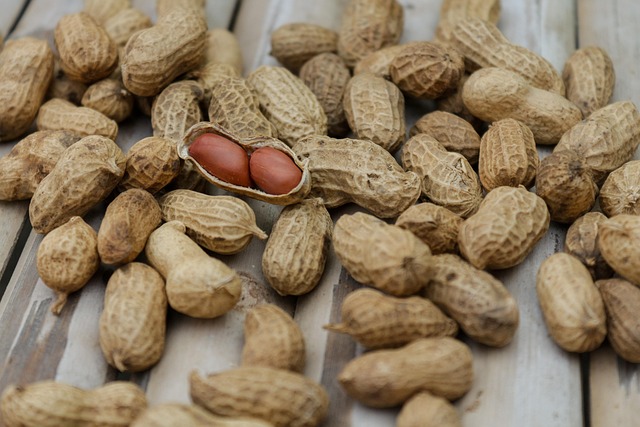When we think of sugar, we often picture candies and sodas, yet the most natural source of sweetness comes from fruit. The sweet compounds found in fruit are primarily simple sugars such as glucose, fructose, and sucrose. Although these sugars are naturally occurring, they still play a significant role in how the body processes energy. Understanding how glucose behaves in fruit can help individuals make informed choices about their diet and maintain a healthy lifestyle without feeling deprived of flavor.
What Is Glucose and Why It Matters in Fruit
Glucose is a monosaccharide, a single sugar unit that serves as a vital energy source for cells. In fruits, glucose is synthesized from photosynthesis and stored alongside other sugars. While fructose is sweeter and more abundant in many fruits, glucose contributes to a balanced sweetness profile and influences how quickly the sugar enters the bloodstream. Because glucose is a key driver of insulin release, its presence in fruit has implications for blood sugar management and overall metabolic health.
- Glucose provides immediate energy for muscle and brain function.
- It is absorbed relatively quickly, but the presence of fiber moderates its effect.
- When consumed with protein or healthy fats, glucose release can be slowed.
Nutrient Profile: The Sweet Side of Fruit
Beyond glucose, fruit offers a complex blend of micronutrients that enhance its health benefits. The natural sugars coexist with vitamins, minerals, and antioxidants that support immune function, cardiovascular health, and cellular repair. Here is a snapshot of the key components that complement glucose in fruit:
- Vitamin C: boosts immune defenses and aids in collagen synthesis.
- Potassium: helps regulate blood pressure and supports nerve signaling.
- Dietary fiber: slows glucose absorption, improving satiety and digestive health.
- Phytonutrients (anthocyanins, carotenoids): reduce oxidative stress and inflammation.
When eaten in whole form, these nutrients create a synergy that can temper the impact of glucose and keep energy levels steady.
Glucose and Blood Sugar Regulation
Glucose is the main carbohydrate the body uses for energy, but its rapid rise in the bloodstream can trigger insulin release. In healthy individuals, this insulin surge is finely tuned and allows glucose to be taken up by cells efficiently. However, excessive or frequent spikes can lead to insulin resistance over time. Fruit mitigates this risk in several ways:
“The fiber, protein, and healthy fats that accompany glucose in fruit slow its absorption, leading to a lower post‑meal glycemic response compared to refined sugars.”
— Nutrition Insight
Thus, while glucose in fruit does raise blood sugar, the accompanying nutrients moderate its speed and magnitude, keeping metabolic stress low.
Choosing Fruits for Optimal Glucose Management
Not all fruits affect blood sugar in the same way. Some contain higher amounts of glucose relative to fiber, while others have a lower glycemic index (GI). Here are some fruit options that balance sweetness with a stable glucose response:
- Apples – high fiber, moderate glucose, good for sustained energy.
- Berries (strawberries, blueberries, raspberries) – low GI, high antioxidant content.
- Oranges – contain both glucose and fructose with vitamin C and a fiber coat.
- Grapes – higher glucose content but also contain natural sugars that can be moderated by portion control.
- Pears – similar to apples but with a softer texture and slightly higher fiber.
When selecting fruit, aim for a mix that provides a balance of these attributes and fits into your daily nutritional plan.
Practical Ways to Include Fruit in a Healthy Lifestyle
Incorporating fruit into everyday meals is a simple way to harness the benefits of glucose while supporting overall health. Consider these actionable strategies:
- Start the day with a fruit‑rich breakfast: Add sliced banana or berries to oatmeal, yogurt, or a smoothie.
- Use fruit as natural sweeteners: Replace refined sugar in baking with dried apricots, dates, or apple sauce.
- Pair fruit with protein or healthy fats: Combine an apple with peanut butter or a handful of nuts to slow glucose absorption.
- Snack smartly: Replace processed snacks with a piece of fruit and a small portion of cheese or yogurt.
- Include fruit in salads: Toss melon, grapes, or citrus segments into leafy greens for a refreshing crunch.
Combining Fruits with Other Foods for Balanced Glucose
The effect of glucose from fruit can be further moderated by the food matrix in which it is consumed. Combining fruit with foods that contain fiber, protein, or healthy fats creates a synergistic effect that slows digestion and reduces glycemic spikes. For example:
- Adding chia seeds to a fruit smoothie increases omega‑3 intake and slows glucose release.
- Serving sliced strawberries with ricotta cheese offers a protein boost that balances sweetness.
- Incorporating avocado into a fruit salsa introduces monounsaturated fats that blunt glucose peaks.
These combinations are especially useful for individuals managing blood sugar levels or aiming for a stable energy flow throughout the day.
Common Myths About Fruit Glucose
Despite the health benefits, several misconceptions about fruit sugars persist. Clearing these myths can help people make smarter dietary choices.
- “All fruit sugars are bad for diabetes.” While fruit does contain glucose, the fiber and water content slow absorption, making it a suitable food for most people with diabetes when consumed in moderation.
- “Fruit should be avoided because of its natural sugars.” Natural sugars in whole fruit come with essential nutrients that refined sugars lack, providing a net health benefit.
- “Eating fruit in the morning will spike your energy.” The glucose in fruit can provide a steady release of energy, especially when paired with protein or healthy fats.
- “All fruits are low in glucose.” Glucose content varies among fruit types; those with higher sugar content are still healthy when eaten in appropriate portions.
Final Takeaway
Glucose in fruit represents a natural, energy‑providing component that, when enjoyed as part of a balanced diet, supports a healthy lifestyle. The combination of fiber, vitamins, minerals, and antioxidants moderates the glucose response, allowing the body to reap energy benefits without excessive metabolic stress. By choosing a variety of fruit, pairing them with complementary foods, and consuming them mindfully, individuals can enjoy the sweet pleasure of fruit while fostering long‑term health and vitality.




